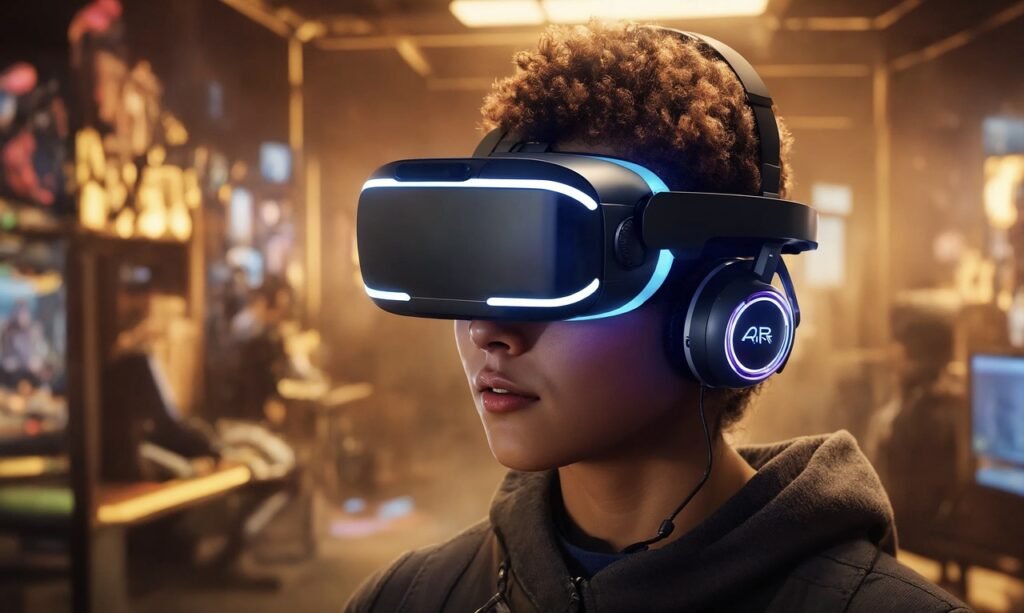This Article has been revised, edited and added to, by Poulomi Chakraborty.
- The Importance of Visual Storytelling in Fashion Digital Marketing
- Harnessing the Power of Social Media
- Leveraging User-Generated Content
- High-Quality Content is Key
- Comparing to Traditional Marketing Channels
- Developing a Brand Identity Online
- Crafting a Mobile-First Digital Experience
- Utilizing SEO to Attract Organic Traffic
- Engaging with Video Content
- Building Relationships Through Social Media
- Analyzing Data to Refine Strategies
- Maximizing Budget Efficiency in Digital Campaigns
- Implementing Geo-Targeting for Localized Campaigns
- Creating Dynamic Ad Content
- Harnessing the Power of Event-Driven Advertising
- Engaging with Emerging Advertising Platforms
- Continuously Learning and Adapting
- Optimizing Digital Advertising Strategies for the Fashion Industry
- The Role of Influencer Marketing in Fashion Digital Marketing
- Choosing the Right Influencers
- Collaborating on Authentic Content
- Leveraging Multi-Channel Strategies
- Measuring Impact and ROI
- Building Long-Term Relationships
- Strategic Selection and Segmentation of Influencers
- Crafting Co-Created Content
- Integrating Influencer Content Across Channels
- Leveraging Long-Term Ambassadorships
- Utilizing Influencer Insights for Product Development
- Measuring and Analyzing the Impact
- Harnessing Emerging Technologies: AI and AR in Fashion Digital Marketing
- Artificial Intelligence in Personalization and Customer Service
- Augmented Reality for a Virtual Try-On Experience
- AI and AR for Inventory and Store Management
- Implementing AI for Enhanced Customer Insights
- AR as a Tool for Immersive Online Shopping Experiences
- Customizing AI-Driven Marketing Campaigns
- AR for Enhanced Brand Storytelling
- Streamlining Operations with AI
- Measuring Success with Advanced Analytics
- The Future of Fashion with AI and AR
- Conclusion
Welcome to the dynamic world of digital marketing within the fashion industry! As fashion continues to evolve rapidly, so too must the strategies we use to market it. This article dives deep into the latest trends and actionable strategies that can help fashion brands stand out in the crowded digital landscape. Whether you’re a startup, a mid-level player, or an established name, the insights here will help you capture attention, drive sales, and build a lasting brand in the digital age.
The Importance of Visual Storytelling in Fashion Digital Marketing

In the fashion industry, image is everything. The power of visual storytelling cannot be overstated, particularly when it comes to engaging and attracting consumers. Brands that master the art of conveying their identity, values, and aesthetics through compelling visuals tend to stand out more and create deeper connections with their audience.
Harnessing the Power of Social Media
Social media platforms like Instagram, Pinterest, and TikTok have become the digital runways for showcasing fashion trends and new collections. These platforms are driven by visuals, making them perfect for the inherently aesthetic-focused fashion industry.
The key to success here lies not only in displaying products but in telling a story that resonates with the target audience. For instance, a luxury fashion brand might use elegant, high-quality images to portray a lifestyle of sophistication and exclusivity, while a streetwear brand might focus on edgier, dynamic images that reflect urban culture.
Leveraging User-Generated Content
Another crucial aspect of visual storytelling is the integration of user-generated content (UGC). UGC not only enhances authenticity but also builds community by involving customers in the brand narrative.
For example, encouraging customers to post pictures of themselves wearing the brand’s apparel and tagging the brand can create a multiplier effect on the original marketing effort. This approach not only increases engagement but also serves as social proof, influencing potential customers by showing real people wearing and enjoying the brand’s products.
High-Quality Content is Key
Investing in high-quality photography and videography is essential. In the digital age, consumers’ attention spans are short, and the competition for their attention is fierce. Quality visual content can help a brand stand out by capturing and maintaining consumer interest. This means employing professional photographers and videographers who can produce content that aligns with the brand’s aesthetic and appeal.
Comparing to Traditional Marketing Channels
The shift from traditional marketing channels like print ads in magazines or billboards to digital platforms highlights a fundamental change in how brands engage with their audiences. Traditional methods, while still relevant, do not offer the same level of interaction and immediate engagement as digital platforms.
For instance, a billboard cannot provide analytics on how many people viewed it and then visited a store, but a digital ad can show how many people saw it, clicked on it, and made a purchase.
This transition to digital requires a different approach to marketing—one that is more dynamic, data-driven, and adaptable. In the fast-paced world of fashion, where trends can change overnight, the ability to quickly analyze and respond to consumer behavior data provided by digital platforms gives brands a significant competitive edge.
Developing a Brand Identity Online
For fashion startups, establishing a strong, recognizable brand identity online is crucial. This goes beyond having a logo and a color scheme; it involves creating a voice and a persona that resonates with your target audience.
Start by defining what your brand stands for, its unique value proposition, and how it differs from competitors. This foundation will guide all your digital content, ensuring consistency across all platforms, which is key to building trust and recognition.
Crafting a Mobile-First Digital Experience
In today’s market, a mobile-first approach is essential. Most consumers use their smartphones as their primary device for browsing and shopping online. Ensure your website is optimized for mobile use, with fast load times, easy navigation, and a secure checkout process.
A mobile-first strategy also extends to email marketing; emails must be responsive and visually appealing on small screens, with clear calls-to-action that are easy to tap.
Utilizing SEO to Attract Organic Traffic
Search Engine Optimization (SEO) is vital for any startup looking to get noticed online without spending heavily on ads. Optimize your website content for search engines by focusing on keywords that are relevant to your target audience but not so competitive that you can’t rank for them.
Include these keywords in your product descriptions, blog posts, and meta descriptions. Additionally, creating quality content that addresses customer pain points or answers their questions can boost your site’s ranking and draw in a relevant audience.
Engaging with Video Content
Video content is incredibly powerful in the fashion industry, capable of conveying your brand’s story and the aesthetic appeal of your products effectively. Startups should consider investing in video production that showcases their products in action.
Videos such as behind-the-scenes footage, designer interviews, and customer testimonials can create an emotional connection with potential customers, encouraging them to buy into not just a product but the brand’s culture.
Building Relationships Through Social Media
Social media platforms are ideal for fashion startups to build relationships and directly engage with their target market. Use these platforms to share your brand’s story, new arrivals, and the inspiration behind your collections.
It’s also important to interact regularly with your followers, respond to their comments, and participate in conversations to foster a community around your brand. This approach not only increases engagement but also turns customers into brand advocates.
Analyzing Data to Refine Strategies
Data analytics should be at the heart of your digital marketing strategy. Use tools to track how users interact with your website and social media posts. This data will provide insights into consumer behavior, preferences, and the effectiveness of your marketing efforts.
Regularly reviewing this data allows you to make informed decisions, helping to refine your strategies and better allocate your marketing budget for maximum impact.
Maximizing Budget Efficiency in Digital Campaigns
Budget constraints are a common challenge for startups. To maximize efficiency, it’s essential to focus on cost-effective advertising platforms that offer high returns on investment.
Social media platforms with built-in advertising capabilities, such as Instagram and Facebook, provide tools like lookalike audiences and retargeting options that help stretch your advertising dollars further by targeting users who resemble your existing customers or have previously engaged with your content.
Implementing Geo-Targeting for Localized Campaigns
Geo-targeting is a powerful tool for fashion startups that operate in specific geographic locations or have a physical presence like pop-up shops or boutiques. By targeting digital ads to users based on their geographic location, startups can drive local traffic and increase the likelihood of converting online interactions into in-store visits.
This strategy not only optimizes your ad spend by focusing on highly relevant audiences but also enhances the customer experience by promoting products that are more accessible to them.
Creating Dynamic Ad Content
Dynamic ads automatically adjust content based on the viewer’s interests, behavior, and past interactions with your brand. This adaptive approach ensures that your ads remain relevant and engaging to each user, increasing the likelihood of conversion.
For fashion startups, dynamic ads can showcase products that a visitor viewed but didn’t purchase, or offer personalized recommendations based on their browsing history.
Harnessing the Power of Event-Driven Advertising
Timing can significantly influence the effectiveness of digital advertising. Planning campaigns around fashion industry events, seasonal trends, or even pop culture moments can create buzz and relevance for your brand.
For example, aligning a campaign with an upcoming fashion week or a holiday season can capitalize on increased consumer interest and activity during these times.
Engaging with Emerging Advertising Platforms
While established platforms like Facebook and Google dominate digital advertising, exploring emerging platforms can provide a competitive edge. Platforms like TikTok and Snapchat are gaining traction with younger audiences and offer innovative advertising formats and creative tools that are ideal for fashion brands aiming to reach a more trend-sensitive and engaged audience. Experimenting with these newer platforms can also potentially offer lower cost per acquisition due to less competition.
Continuously Learning and Adapting
The digital landscape is constantly evolving, making it essential for startup founders to stay informed about the latest tools, trends, and technologies. Regularly attending webinars, participating in industry forums, and following thought leaders can provide insights and inspiration for refining your digital advertising strategies.
Moreover, constant A/B testing of ads to determine what resonates best with your audience is crucial for ongoing improvement and success.
By strategically employing these approaches, fashion startups can not only optimize their digital advertising efforts but also ensure that every dollar spent contributes to sustainable business growth.
Optimizing Digital Advertising Strategies for the Fashion Industry

As the fashion industry becomes increasingly digital, the importance of refined and highly targeted advertising strategies has never been more critical. The right advertising strategy can mean the difference between a campaign that resonates and one that falls flat. Below, we delve into how fashion brands can optimize their digital advertising efforts to maximize impact and ROI.
Understanding Your Audience
The first step in optimizing any advertising campaign is to thoroughly understand your audience. Who are they? What are their preferences, behaviors, and buying patterns?
Fashion brands need to segment their audience meticulously, not just by basic demographics like age and gender, but also by fashion preferences, shopping behavior, and even values like sustainability.
For instance, a luxury fashion brand might target an older, more affluent demographic that values quality and exclusivity, whereas a fast fashion brand might target younger audiences who are more interested in trends and affordable pricing. Utilizing data analytics tools can help in creating detailed customer profiles that inform more targeted advertising.
Choosing the Right Platforms
Once you understand your audience, selecting the right digital platforms for your ads is crucial. Each platform serves a different purpose and reaches a different segment of your audience. Instagram and Pinterest, for example, are highly visual platforms that work well for showcasing fashion products.
In contrast, Facebook and Twitter might be better suited for customer engagement and brand announcements.
Selecting the right platforms also means considering where your audience spends their time and what type of content they consume. A younger audience might be more accessible via TikTok or Snapchat through quick, catchy videos, while a professional demographic might be more engaged on LinkedIn or through more sophisticated content on Instagram.

Related: Check out our free SEO suite

Crafting Compelling Ads
The creatives of your ads—images, videos, and copy—need to be compelling and aligned with the brand’s identity. For fashion brands, this often means focusing on aesthetics and design. High-quality images and videos that highlight the products’ details and how they can be styled are particularly effective.
Moreover, the ad copy should speak the language of the target audience, whether it’s more formal and polished or casual and cheeky. A/B testing different creatives can help determine what works best in terms of engagement and conversion rates.
Leveraging Retargeting Strategies
Retargeting is an essential technique in digital advertising, especially for fashion brands. By targeting users who have visited your website or interacted with your brand but did not make a purchase, you increase the chances of converting them.
Retargeting can be done through various methods such as displaying ads on other websites they visit or sending personalized emails with the items they viewed or added to their cart.
This strategy not only boosts sales but also increases customer retention by keeping your brand top-of-mind. Utilizing cookies and pixel tags can help in tracking user behavior, thereby enabling more precise retargeting campaigns.
Analyzing and Adapting
Finally, the key to optimizing any advertising strategy is continuous analysis and adaptation. Digital marketing provides an array of analytics that allows brands to track the performance of their ads in real-time. Metrics like click-through rates, engagement rates, and conversion rates can provide valuable insights into what is working and what isn’t.
By regularly analyzing these metrics, fashion brands can quickly adapt their strategies, tweak their campaigns, and optimize their budget allocation to ensure the highest possible ROI.
Digital advertising in the fashion industry requires a blend of creativity and strategic thinking. By understanding the audience, choosing the right platforms, crafting compelling ads, leveraging retargeting, and continuously adapting based on analytics, fashion brands can significantly enhance their digital presence and drive sales.
The Role of Influencer Marketing in Fashion Digital Marketing

Influencer marketing has become one of the most effective strategies in the fashion industry’s digital marketing arsenal. As consumers increasingly look to social media influencers for fashion inspiration and advice, leveraging these influencers can help brands enhance their visibility, credibility, and ultimately, their sales. Here’s how fashion brands can effectively utilize influencer marketing to reach their target audiences and boost their digital marketing efforts.
Choosing the Right Influencers
The first step in a successful influencer marketing strategy is selecting the right influencers. This doesn’t necessarily mean going for those with the highest number of followers. Instead, fashion brands should focus on finding influencers whose aesthetic, values, and audience align with their own brand identity.
Micro-influencers, often with smaller followings, can sometimes offer higher engagement rates and more niche audiences, making them highly effective partners for brands looking to reach specific demographics.
Collaborating on Authentic Content
Once the right influencers are on board, the next step is collaborating with them to create content that feels authentic and resonant. Authenticity is key in influencer marketing; followers are quick to spot and disregard content that feels forced or overly promotional.
Effective collaborations allow influencers to infuse their personality and style into the brand’s message, creating a seamless blend that resonates with both their followers and the brand’s audience. This might involve influencers styling pieces in their unique way, participating in brand challenges, or taking their followers behind the scenes at fashion events.
Leveraging Multi-Channel Strategies
To maximize the impact of influencer collaborations, fashion brands should consider a multi-channel approach. While Instagram may be the prime platform for fashion influencers, other platforms like YouTube for in-depth reviews and styling tips, and TikTok for short, engaging content formats, can also be highly effective.
By spreading content across multiple platforms, brands can extend their reach and engage with audiences in different aspects of their digital lives.
Measuring Impact and ROI
The effectiveness of influencer marketing campaigns must be meticulously measured to understand their impact and return on investment (ROI). Metrics such as engagement rates, traffic to the website, conversion rates, and direct sales figures are crucial.
Additionally, tools like affiliate codes and tracking links can help brands trace the direct impact of influencers on sales, allowing for a clearer measure of an influencer’s ROI.
Building Long-Term Relationships
Lastly, the most successful influencer partnerships often come from long-term relationships rather than one-off campaigns. When influencers become genuine advocates for a brand, their endorsements become more credible and powerful.
Establishing long-term relationships with influencers can lead to ongoing content creation, repeated exposure to their loyal followers, and ultimately, a strong and positive association with the brand.
Strategic Selection and Segmentation of Influencers
Choosing the right influencers is much more than just looking at their follower count or popularity. For startups, the alignment of values and aesthetic with the brand is paramount.
To enhance this selection process, consider using data-driven tools that analyze the engagement rate, audience demographics, and content style of potential influencers. This helps in identifying influencers who not only align with your brand’s identity but whose audiences are more likely to be interested in your products.
Crafting Co-Created Content
The next step in leveraging influencer partnerships is moving beyond simple endorsements to co-creating content. This involves influencers in the creation process of collections or key pieces, which can lead to more authentic promotion and deeper engagement from their followers.
These collaborations can also take the form of capsule collections or limited-edition releases, which not only generate excitement but also provide exclusive content for both the influencer and the brand.
Integrating Influencer Content Across Channels
Maximizing the impact of influencer collaborations involves more than just one-off posts on social media. To truly capitalize on the content created, integrate it across all your digital marketing channels. This includes featuring influencer content on your website, in digital newsletters, and even in online ads.
Such integration ensures that the influencer’s endorsement reaches your audience across multiple touchpoints, reinforcing the message and maximizing the reach.
Leveraging Long-Term Ambassadorships
Instead of short-term campaigns, consider establishing long-term relationships with key influencers who can become brand ambassadors. This approach builds a more consistent and trusting relationship between the influencer, their audience, and your brand.
Long-term collaborations allow for a series of coordinated campaigns that keep your brand top-of-mind for the influencer’s audience, providing a steady stream of content and endorsement.
Utilizing Influencer Insights for Product Development
Influencers are often trendsetters and have a deep understanding of consumer preferences within their niche. Engaging them in product development processes or collecting their feedback on upcoming collections can provide valuable insights that help tailor your products to meet current market trends and consumer needs.
This not only enhances product offerings but also strengthens the influencer’s investment in your brand’s success.
Measuring and Analyzing the Impact
To truly understand the effectiveness of your influencer marketing efforts, implement robust measurement and analysis practices. Look beyond basic metrics like likes and comments to more detailed analytics such as engagement rates, click-through rates, and conversion rates.
Additionally, use attribution models to determine the direct impact of influencer campaigns on sales. This data is invaluable for refining future campaigns and understanding the return on investment of your influencer marketing strategies.
Influencer marketing, when done right, offers a powerful way for fashion brands to reach targeted audiences with authentic messages that drive engagement and sales. By carefully selecting influencers, crafting authentic content, leveraging multiple channels, measuring the impact, and fostering long-term relationships, brands can effectively enhance their digital marketing strategies in the competitive fashion industry.
Harnessing Emerging Technologies: AI and AR in Fashion Digital Marketing

The integration of emerging technologies such as Artificial Intelligence (AI) and Augmented Reality (AR) is revolutionizing the way fashion brands engage with their customers.
These technologies are not just futuristic concepts but are currently being employed to enhance the shopping experience, improve customer engagement, and increase sales. Let’s explore how AI and AR are being utilized in fashion digital marketing and the benefits they offer.
Artificial Intelligence in Personalization and Customer Service
AI has immense potential in personalizing the shopping experience for customers. By analyzing data on browsing habits, purchase history, and even social media interactions, AI can help fashion brands offer personalized recommendations, tailored email marketing campaigns, and dynamic web content that aligns with individual customer preferences.
Moreover, AI-powered chatbots have become an essential part of customer service in digital marketing. These chatbots can handle a range of tasks from answering FAQs to providing styling advice and processing returns, all without human intervention.
This not only improves efficiency but also enhances the customer experience by providing instant assistance at any time of the day.
Augmented Reality for a Virtual Try-On Experience
AR is particularly transformative in the fashion industry as it addresses one of the biggest challenges of online shopping: the inability to try on clothes. AR technology allows customers to see how clothes will look on them through their mobile devices or computers, all from the comfort of their homes.
This not only makes online shopping more interactive and fun but also reduces the likelihood of returns due to unsatisfactory fits.
Fashion brands can also use AR to create engaging marketing campaigns. For instance, customers can see how a piece of clothing fits in various environments or styles, or even walk a virtual runway, which can make the shopping experience more engaging and memorable.
AI and AR for Inventory and Store Management
Beyond marketing and customer engagement, AI and AR also offer benefits in inventory and store management. AI can predict fashion trends and customer buying patterns, helping brands manage their stock more efficiently. This leads to better inventory decisions, reducing overstock and understock situations, and optimizing supply chain operations.
On the other hand, AR can enhance the physical store experience by integrating digital elements. For example, AR mirrors in stores can allow customers to try on different colors of a product without physically changing clothes, or navigate through a store’s layout more effectively through AR-guided paths.
Implementing AI for Enhanced Customer Insights
AI can transform vast amounts of data into actionable insights that can dramatically improve how fashion startups engage with their customers. By implementing AI-driven analytics, startups can uncover patterns in customer behavior, preferences, and purchasing trends.
This information is crucial for crafting personalized marketing messages, optimizing product placement, and timing promotions perfectly. AI tools can also help predict future trends, allowing startups to stay ahead of the curve by adjusting their inventory and marketing strategies accordingly.
AR as a Tool for Immersive Online Shopping Experiences
AR technology can be used to create immersive and interactive online shopping experiences that closely mimic in-store shopping. For fashion startups, AR can enable customers to try on clothes virtually, using just their smartphone cameras to see how different items look on their own bodies.
This not only enhances the customer experience by making online shopping more interactive and fun but also significantly reduces the rate of returns due to issues with fit or style preferences.
Customizing AI-Driven Marketing Campaigns

Tailoring marketing efforts to individual customer needs and preferences is made easier with AI. Startups can use AI to segment their audience more accurately and create customized marketing campaigns that speak directly to different groups.
AI-driven tools can analyze the effectiveness of these campaigns in real-time, allowing startups to make adjustments on the fly to improve engagement and conversion rates. By delivering content and promotions that are aligned with individual preferences, startups can increase customer loyalty and lifetime value.
AR for Enhanced Brand Storytelling
AR can also be a powerful tool for storytelling, allowing brands to create deeper emotional connections with their customers. Fashion startups can use AR to bring their brand stories to life, whether it’s showcasing the inspiration behind a collection, the craftsmanship of garments, or the brand’s commitment to sustainability.
These stories can be experienced by customers through interactive AR content accessible via smartphones, enhancing the perceived value of the brand and deepening customer engagement.
Streamlining Operations with AI
Beyond marketing and customer engagement, AI can also streamline operations, from supply chain management to customer service. AI-driven predictive analytics can help startups forecast demand more accurately, manage inventory more efficiently, and optimize distribution channels.
Additionally, AI-powered chatbots can handle routine customer inquiries and complaints, freeing up human resources for more complex issues and enhancing overall customer service.
Measuring Success with Advanced Analytics
To effectively harness the power of AI and AR, fashion startups must also implement advanced analytics to measure the success of their initiatives. This includes tracking engagement metrics, conversion rates, and customer satisfaction levels associated with AI and AR features.
By continuously monitoring these metrics, startups can refine their strategies, ensuring that they are getting the maximum return on their investment in these technologies.
The Future of Fashion with AI and AR
The future of fashion digital marketing with AI and AR looks promising as these technologies continue to evolve. They are set to create more immersive, personalized, and efficient shopping experiences. As these technologies become more accessible, fashion brands that adopt and innovate with AI and AR will likely find themselves at a competitive advantage.
By integrating AI and AR into their digital marketing strategies, fashion brands can not only enhance the customer experience but also improve operational efficiencies, leading to increased customer satisfaction and loyalty.
Conclusion
As the fashion industry navigates the digital age, sustainability has become a crucial element of marketing strategies. Consumers are increasingly conscious of environmental impact and seek brands that prioritize eco-friendly practices. Sustainable digital marketing not only involves promoting products made from sustainable materials but also adopting green practices in digital campaigns themselves. This includes optimizing online content to consume less data and using digital platforms to educate consumers about sustainability efforts.
Fashion brands are now highlighting transparency in their supply chains, showcasing their commitment to ethical practices, and engaging with customers on social and environmental issues through digital channels. By aligning digital marketing strategies with sustainable practices, fashion brands can enhance their brand image, meet consumer expectations for responsibility, and contribute to a healthier planet. This shift not only resonates with the eco-conscious consumer but also sets a brand apart in a competitive market, paving the way for a future where fashion and sustainability go hand in hand.
Read Next
- Content Marketing and SEO Budget Synergy for Startup ROI
- The ROI of Technical SEO: Building a Business Case for Budgeting
- Startup SEO Budget Allocation: Balancing Paid and Organic Strategies
- Cost-Effective Startup SEO: Maximizing ROI with Limited Budgets
- The Link Between SEO Budget and Long-Term ROI for Startups





















